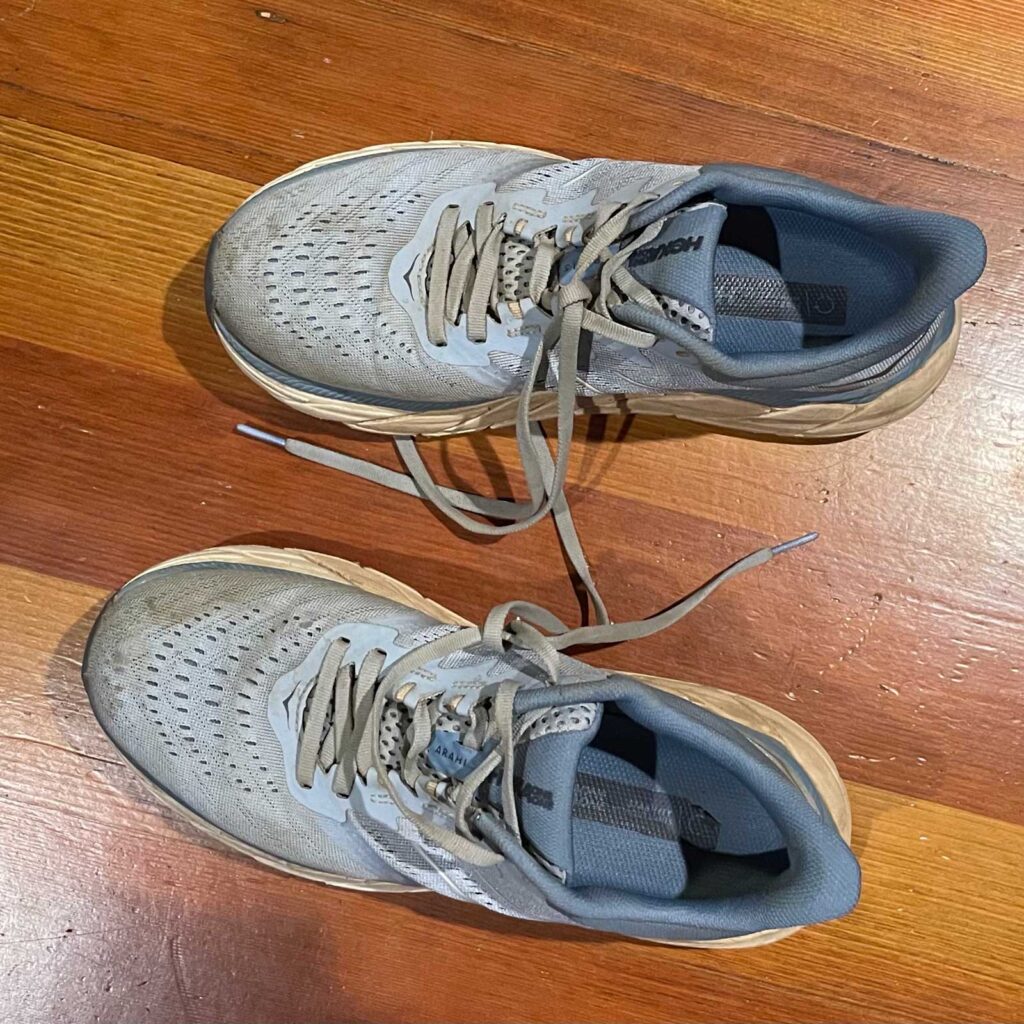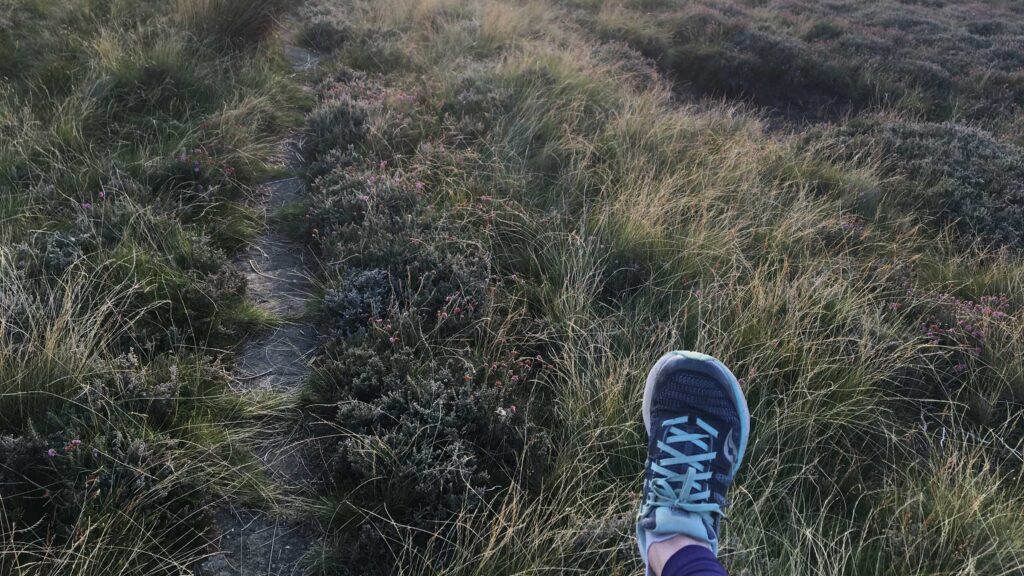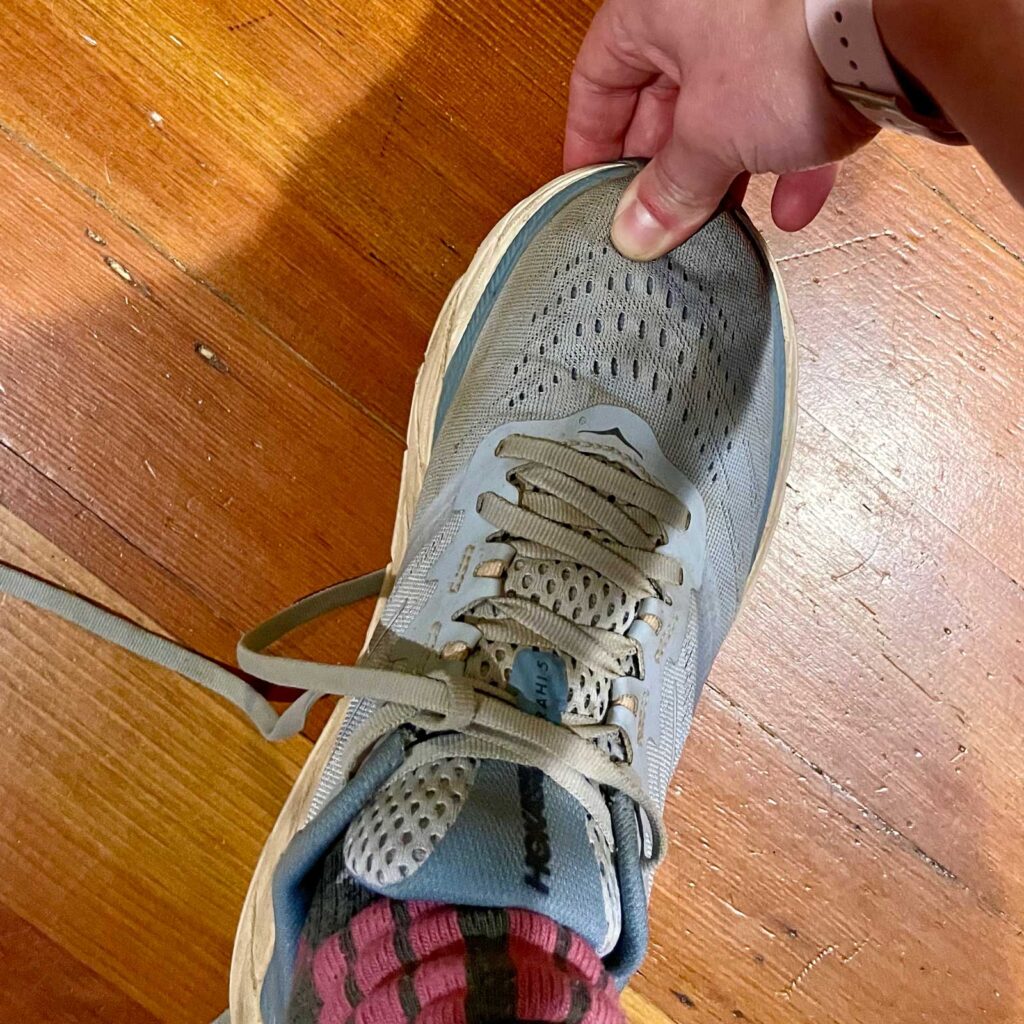Running with bad ankles and flat arches is a pain – literally.
I was testing out a pair of running shoes for possible gear coverage and don’t get me wrong, they were cool shoes. Interesting tech (did you know shoes can be bluetooth compatible now?!), a cool design, good venting, the works.
But here’s the problem: I have fat, flat feet and ankles that roll and twist a lot so finding the best running shoes online for me doesn’t usually work.
On the one hand, I need arch support since my feet don’t have strong arches on their own and having an arch in your foot is surprisingly important. But on the other hand (or should I say foot?), my feet are wide so they roll over some arch support AND when there’s too much arch in the shoe it hammers in on the nerve in my foot which is mighty painful. THEN, my ankles also have a habit of rolling and twisting so they need extra support (the ankles and arches probably go together).
Long story short: I’m that person in the shoe store with half a dozen shoeboxes piled up around me and a very tired shoe fitter.
Testing New Running Shoes
SO, back to these shoes I was testing. Given these shoe fitting issues I’ve had in the past, you’d think I’d be like, “hmm slim chance they’re really gonna work for me, should probably skip it.” But I’d been looking to do more running coverage and had been looking for a good pair of running shoes, so I figured, why not?
Welp. You guessed it. The shoes were made for people with arches and normal-width feet and my flat feet were not happy with high arch support pushing against the inside of my foot. Either that or the slightly more narrow shoe meant my midsole just squished up against the side of the shoe rather than landing on the arch support.
Either way, the shoes weren’t for me sadly. These were the Under Armour Flow Velociti Wind shoes and while they weren’t the right fit for me, they have gotten high marks with other runners so I definitely wouldn’t write them off.
The good part? It put me on the hunt to find some new running shoes that do work (my old ones were ready for retirement and didn’t quite have the cushion my knees were looking for anymore). However, with COVID, I couldn’t go my usual route of going into a specialized running shop and trying a bunch on (the ideal way to find the right pair of running shoes).
Searching for the Right Running Shoe Online
 These are the Hoka One One shoes I settled on. They’ve already gotten quite a few miles on them.
These are the Hoka One One shoes I settled on. They’ve already gotten quite a few miles on them.
Instead, I turned to the internet and started my research. First, I looked at the brands of running shoes I’ve gotten before. Brooks has always been a favorite of mine and they have a nifty shoe finder tool (though it isn’t a perfect solution).
Second, I looked at a few reviews of different running shoes with my needs in mind (flat feet and ankle support). Having written a good number of different reviews like this and seeing how some publications do it in collaboration with Amazon, I’m careful about which reviews I trust. Sites like Washington Post or New York Times, I know they’re fairly trustworthy and have good morals, but I wouldn’t consider them experts on the subject of running.
Sites like SELF, Gear Junkie, and Runner’s World are ones I’m a fan of. Andrew Skurka also does some decent reviews which do more in-depth coverage on a couple different shoes.
I ended up going with a pair of Brooks shoes, but they didn’t quite work for support so sent them back. (Gotta get that free returns when you’re ordering online.) I then landed on the Arahi 5 shoe from Hoka One One and so far, I’m liking them! I have successfully found a pair of running shoes via the internets that meets all my needs.
If you want to do the same, here are my (brief) tips.
5 Tips for Finding The Best Running Shoes for Your Feet Online

If you’ve gotten into running recently (or more than a year ago), it might be time to get some new running shoes! In that case, it can be a little daunting. Running shoes are expensive and it’s hard to know what your feet need.
I’m not an expert, but I have learned a thing or two about running shoes over my years buying running shoes and writing about gear.
If you want a more detailed explanation of the mechanics of running shoes, check out this article from REI.
Find a Good Return Policy
Many online stores nowadays have decent return policies, but it’s still worth double checking that policy for wherever you buy from. Some will require products to be unused while others allow returns anywhere up to 30-90 days with no questions asked.
Brooks allows free returns up to 90 days. When I went through the return process, it was fairly easy, but you do have to print out the return label and they don’t issue the refund until they receive and process the shoes. On the other hand, when I got my Hoka One One shoes, I didn’t do a return, but they included a return label in the original package and allow for returns within 30 days of purchase.
Check Out Your Feet
What are your feet like?
Flat arches? High arches? Narrow? Wide?
How do you tend to step?
On the ball of your foot? On the heel?
All of these factors will impact the way you experience a shoe. Many shoes will say if they’re designed for high arches or low arches, but the most common specification for a running shoe is “neutral”, “support”, and sometimes “motion control”, or “max support.” You’ll also see cushion level as a measurement too.
The support level generally has to do with the type of support the shoe will give your arch and ankle to avoid overpronation (your foot rolls too far inward). If you have really flat arches or a history of ankle issues, a support shoe or motion control shoe may be something to consider as well.
Be Honest and Realistic With Yourself About Your Running Goals
When I got my first pair of running shoes, I told the fitting person that I wanted to run trails. Yes, I wanted to run trails the most, but in reality, I was mostly walking out the door and hitting the pavement.
At that point, I had to tell myself that a road running shoe was probably the right move. Plus, it would still work well enough for the mild trail runs I do.
This is my way of saying, don’t get running shoes based on aspirational goals. Get running shoes based on your current, realistic situation.
Read Some Reviews
I mentioned a few different review sites I like earlier (SELF, Gear Junkie, and Runner’s World), but also take advantage of other customer reviews too. When I looked at the Arahi 5 reviews, I found multiple other runners say this shoe helped them get back to running after a sprained ankle or helped them with flat feet so I felt more confident about it being the right shoe for me.
Get a Size Bigger Than Your Street Shoe
 Me testing the “rule of thumb.”
Me testing the “rule of thumb.”
When I’m getting running shoes, I tend to size up the shoe. For example, even though my standard shoe size is around 7.5 US, I’ll get an 8.5 running shoe. This is because when you’re running, your feet can swell more. Plus, you don’t want your toes squished against the front when you’re going downhill.
I use the bigger street shoe technique as a general rule, but all brands and shoes are a little different. Basically, you don’t want the shoe to feel so big that you’re slipping and sliding around in it. But you do want to be able to move a little bit in the shoe without rubbing and causing blisters. If you have no clue what sizing feels right, stick to the rule of thumb: having around one thumbnail’s length of space between your longest toe and the tip of the shoe.
I hope these tips help and I’ll see you on the trail!
Like this:
Like Loading...